Posted on DPR recently was an interesting question:
Is an AA filter necessary for wide aperture and deep DOF photography? That is, will lens aberrations for wide open photography and diffraction for deep DOF photography do the job of the AA filter?
I’ve beat the diffraction issue to death in the past, but I hadn’t considered aberration as an aliasing preventer.
I took a Zeiss Otus 85mm f/1.4 ZF.2 lens that had peaked out wide open at 1200 cycles per picture height on a Sony a7RII in a recent test. Under those test conditions, with a target not as sharp at the razor blade that is now my gold standard, that resolution was very good, but substantially below what the lens could do if you stopped it down to f/2.8.
I aimed it at an ISO 12233 target at a distance of 15 feet. The height of the meat of the target was 920 pixels. That means that the monochromatic Nyquist frequency is slightly higher than the patterns marked with a “9”. Any patterning you see in the areas marked with the number “10” or higher are aliased for sure. The point on the chart where Bayer color filter array aliasing occurs is harder so say. “5” is safe, but it may be too conservative.
I illuminated the target with a pair of Wescott LED panels, with the intensity set to “stun” (actually, 100) and the color temperature set to 5000K.
I put the camera on a focusing rail, and made 51 exposures over a distance of 190mm. That means the distance between exposures was 190/50mm, or 3.8mm.
I brought the images into Lightroom, with everything set to default except a custom color balance to the white ares in the target. Then I looked for aliasing.
Boy, did I find it. In fact, I found it in every single picture, which proved to me that defocusing isn’t such a great way to reduce aliasing, either.
Here, at 1:1 are some examples.
At one end of the rail:
At the other end:
At a few places in the middle:
With a good lens, even wide open, the lens won’t blur things enough to eliminate aliasing.
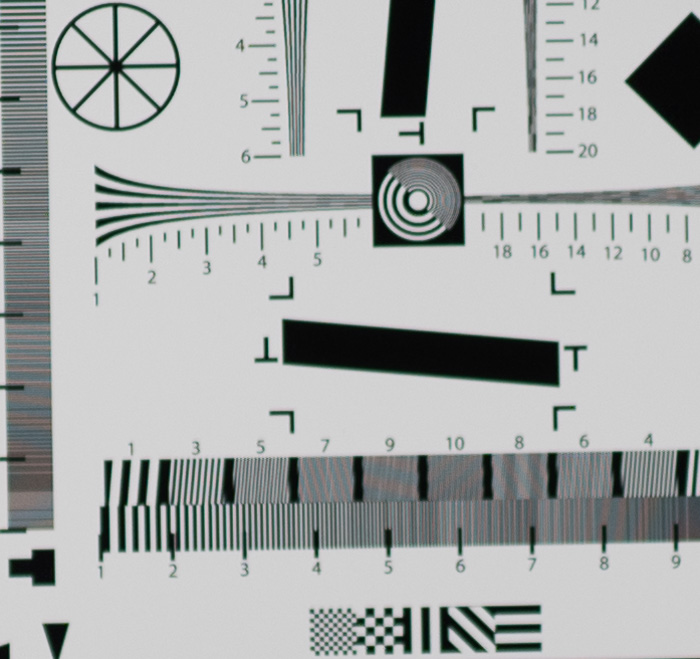
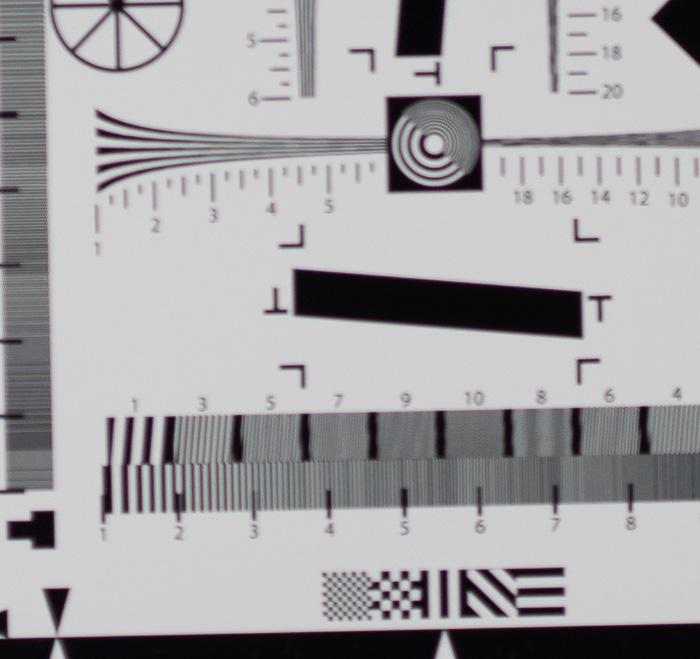
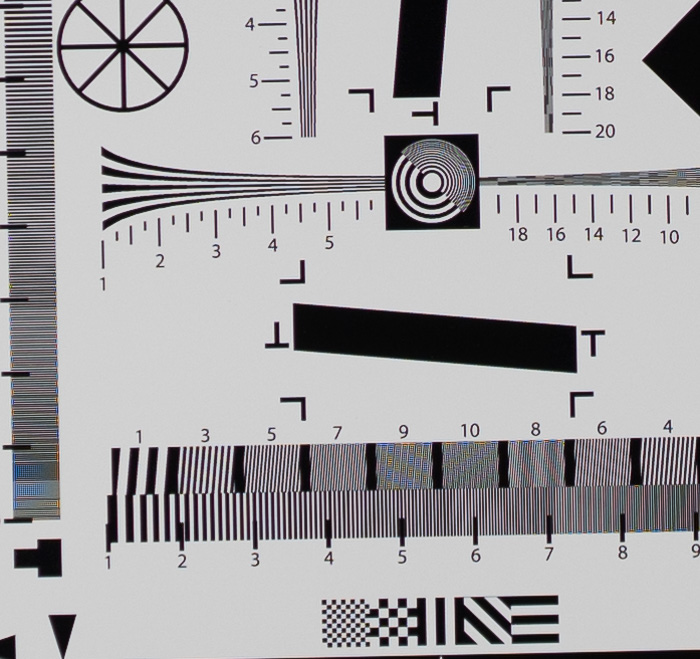
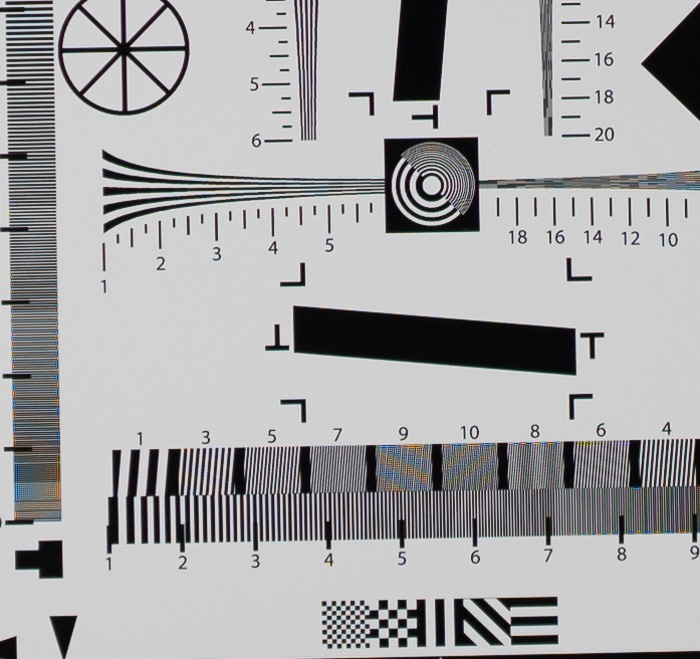
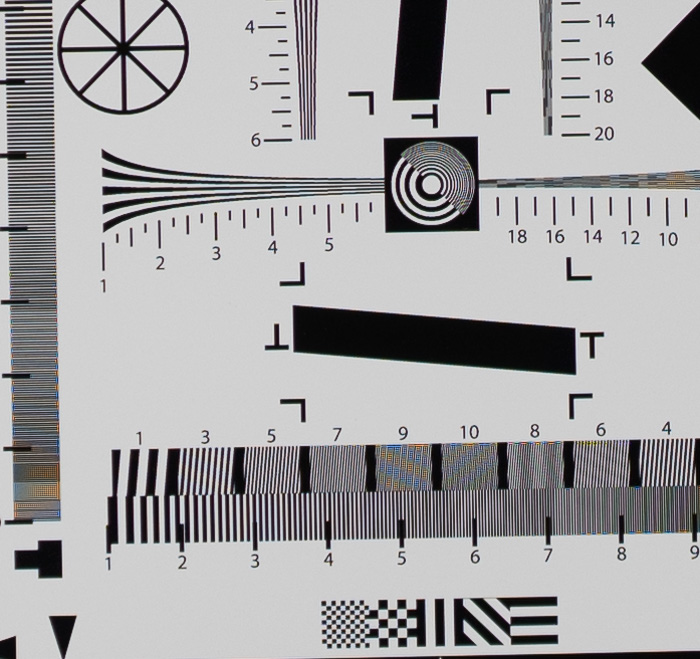
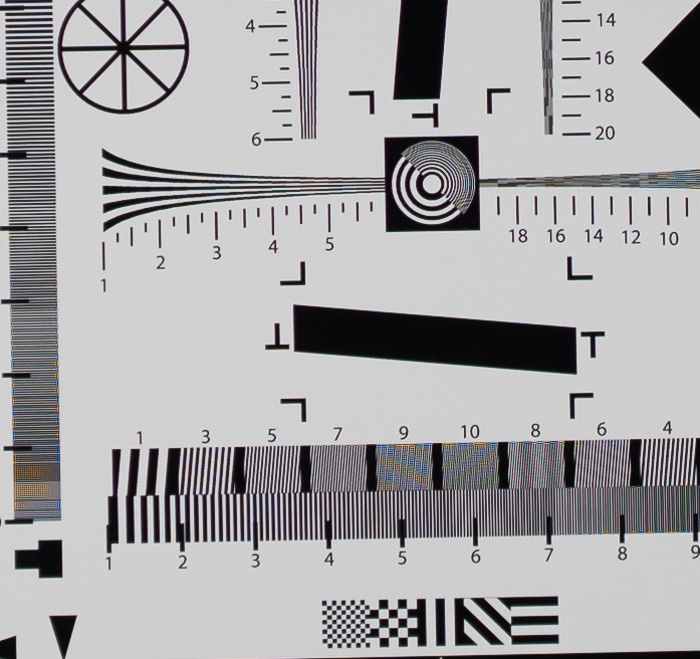
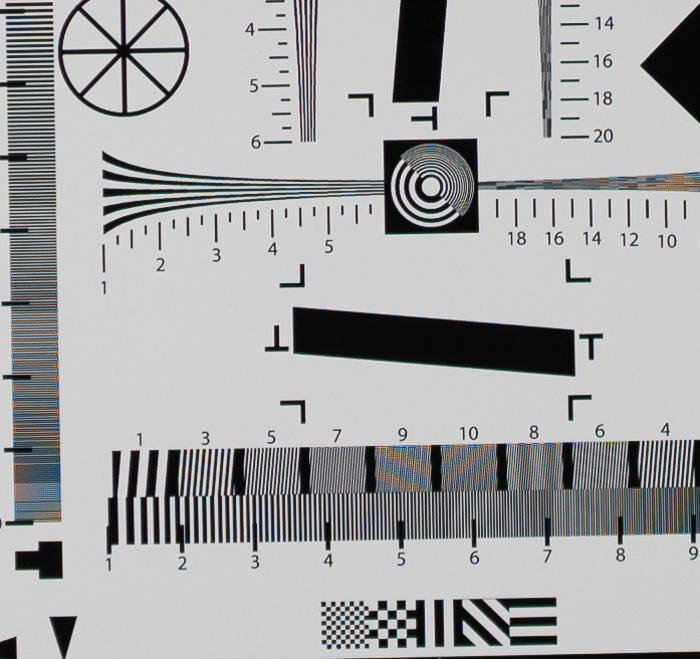
HI Jim,
“I found it in every single picture, which proved to me that defocusing isn’t such a great way to reduce aliasing, either.”
I wonder whether what we are seeing in heavily defocused images is aliasing or phase shift. With normal lenses I would be inclined to think the latter. The Otus being the Otus however…
Jack
Jack, I’ve added this to the post: “I aimed it at an ISO 12233 target at a distance of 15 feet. The height of the meat of the target was 920 pixels. That means that the monochromatic Nyquist frequency is slightly higher than the patterns marked with a “9”. Any patterning you see in the areas marked with the number “10” or higher are aliased for sure. The point on the chart where Bayer color filter array aliasing occurs is harder so say. “5” is safe, but it may be too conservative.”
Is that right? Is there any way that phase shifts could add patterning above the Nyquist frequency if there were no aliasing?
I think so, but I’m not sure.
Jim
Defocus adds patterning even below Nyquist. It happens when the OTF dips below zero (we normally don’t see it because our lenses are not often that defocused in a sharpness test and MTF is the absolute value of the modulus of the OTF). Boreman has an example of it on the cover of his book.
Jack
Yeah, I know that, but can it cause patterning with inputs above Nyquist for situations where there’s no aliasing? I’m treating above-Nyquist patterning as prima facie evidence of aliasing.
If there are inputs above Nyquist, how can there be no aliasing?
If the input signal (the target) is above Nyquist, and some combination of lens aberration, diffraction, and maybe an AA filter reduces that part of the signal to a negligible level, there will be no aliasing.
Jim
I see what you mean now. Don’t know. I would guess that where pixels are on the cusp of flipping it could happen that one line goes one way and the next goes the other, making it look like aliasing above Nyquist.
Well, even an anti-aliasing filter doesn’t eliminate aliasing, it only reduces it.
I wonder if the difference in effectiveness has to do with the mechanism of action (birefringence in two directions splitting the image into four before it reaches the sensor) being a more effective way of smearing a small point across more colored subpixels without affecting slightly larger-scale contrast unlike diffraction…
Also, could you try these sample files with RawTherapee or some other program that uses AMaZE demosaicing to compare with Lightroom?
The usual AA filter with a shift of 0.375 pixels has a real-frequency axis (j-omega axis) zero at about 0.7 cycles/pixel. That’s a good thing. Normal diffraction or wide-open lens aberrations look to me like the responses of an all-pole filter. I’m talking Laplace transforms here; if that doesn’t mean anything to you, just ignore it.
I’ll look at some other raw processing.
Jim
That’s true, the beam-splitting AA filter acts as a notch filter rather than a simple low-pass filter; at certain frequencies above its cut frequency it theoretically wouldn’t reduce the contrast at all.
A beam splitter looks like a cosine in the frequency domain, starting at DC and hitting first zero typically around 0.7 cycles/pixel (+/-0.05, say). Not coincidentally 1/4 divided by that yields about the spatial domain 0.375 pixel shift Jim indicated above.
Jack